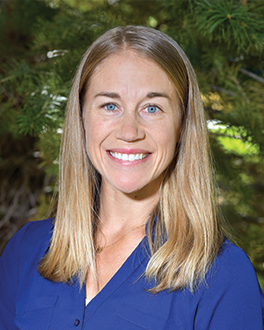High-intensity Resistance Training in Post-Acute Care Produces Better Outcomes
Researchers advocate the need to increase the intensity of rehabilitation provided to post-acute patients to promote greater value and patient satisfaction.
Lauren Hinrichs
10/1/2021
Results of a study by researchers from the University of Colorado Anschutz Medical Campus show that high-intensity rehabilitation training for older patients in skilled nursing facilities can safely and effectively accelerate improvements in their function, enabling them to return home sooner. The study was published in Physical Therapy, October 2020.
Skilled nursing facilities provide medical and rehabilitation services to individuals post-hospitalization to help facilitate the transition to home or the next level of care. However, research has shown the trajectory of functional recovery following hospitalization and skilled nursing stay care is generally poor, with fewer than 25 percent of patients returning to pre-hospitalization levels of function.
How the Study Worked
“Our study identified an impactful opportunity to improve the way we care for patients in skilled nursing facilities,” said lead author Allison Gustavson, PT, DPT, PhD, at the CU Anschutz Medical Campus. “Our findings demonstrate that high-intensity resistance training is safe, effective, and preferable in caring for medically complex older adults in skilled nursing facilities.”
The study split 103 participants into two nonrandomized independent groups—usual care and high-intensity care—within a single skilled nursing facility. For both groups, physical therapists administered the Short Physical Performance Battery and gait speed at evaluation and discharge.
Results of the Study
For the high-intensity training group, the physical therapists used the i-STRONGER program (Intensive Therapeutic Rehabilitation for Older Skilled Nursing Home Residents).
The patients participating in the high-intensity program benefited by increasing their functional independence, as evidenced by a significant and clinically meaningful increase in their walking speed from evaluation to discharge by 0.13 meters/second more than the usual care group. This is a critical outcome for this patient population, as improvements in walking speed greater than 0.1 meters/second are associated with reduced mortality.
Also, the patients’ stay at the skilled nursing facility was reduced by 3.5 days.
Implications for Future Rehab Approaches
Based on their findings, the researchers advocate the need to increase the intensity of rehabilitation provided to patients with medically complex conditions to promote greater value and patient experience within post-acute care.
“Our study shows that the quality of rehabilitation compared to the quantity drives better outcomes,” said Principal Investigator Jennifer Stevens-Lapsley, MPT, PhD, FAPTA. “These findings provide a timely solution to address rehabilitation value in the context of recent post-acute care changes by policymakers who are looking to raise the bar on the quality and efficiency of post-acute care services,” she said.
“We are eager to support the transition to this safer and more effective high-intensity care approach,” said Stevens-Lapsley, a professor and director of the Rehabilitation Science PhD Program at the CU Anschutz Medical Campus.
“We are encouraged by the results that accelerated the improvement in patient function, created positive patient and clinician experience, and resulted in less time needed for care in the skilled nursing facility,” she said.
 The University of Colorado has partnered with the American Health Care Association to offer a CEU-credited High-intensity Resistance training program. For those interested in learning more about the research or training or for implementation support, contact Lauren Hinrichs or visit www.movement4everyone.org for more information.
The University of Colorado has partnered with the American Health Care Association to offer a CEU-credited High-intensity Resistance training program. For those interested in learning more about the research or training or for implementation support, contact Lauren Hinrichs or visit www.movement4everyone.org for more information.
Lauren Hinrichs, PT, DPT, OCS, board-certified in orthopedics, is a Rehabilitation Science PhD student with the Department of Physical Medicine and Rehabilitation, University of Colorado School of Medicine. She can be reached at lauren.hinrichs@CUAnschutz.edu.